All About Digraphs & Blends: Free Lists & Charts
This post may contain affiliate links. As an Amazon affiliate, we earn from qualifying purchases. See our disclosure policy.
Explore and learn all about consonant blends and digraphs, discerning their distinctions, and discovering the most effective teaching methods. You’ll also get access to FREE Science of Reading aligned resources, including lists and charts, to enhance your instructional approach.
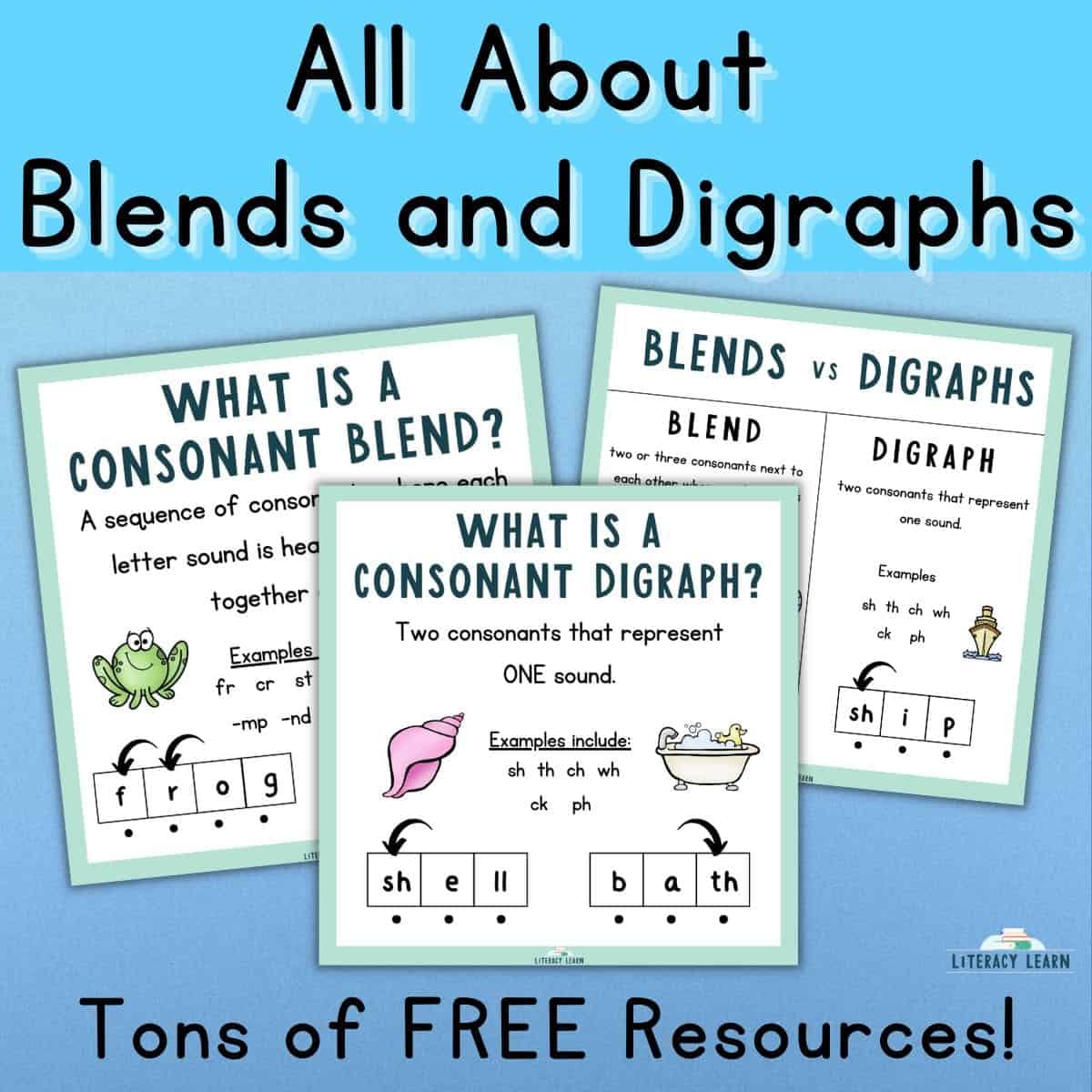
What Is a Digraph?
Definition: Consonant digraphs are TWO consonants that represent ONE sound.
Common Digraphs include:
- sh
- th
- ch
- wh
- ck
- ph
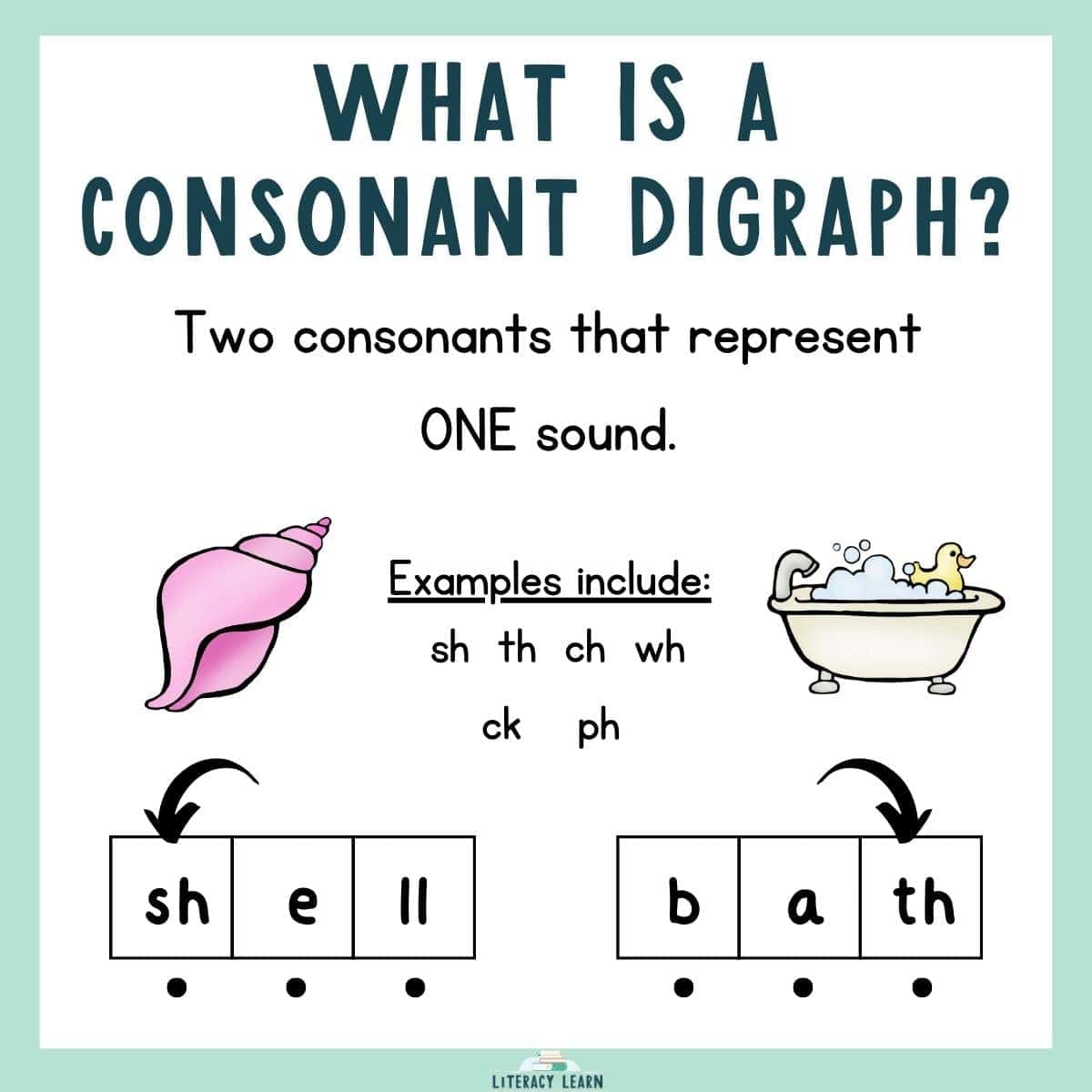
Example Digraph Words:
- ship
- with
- chip
- pick
- whale
- phone
Morphology: The word digraph is made up of two Greek morphemes: di (meaning two) + graph (meaning to write). The literal definition is two writings (or graphemes). This definition helps us to remember that a digraph is two letters that make one sound.
Digraphs can be included at the beginning, middle, or end of a word.
- The digraph wh will only appear at the beginning of a base word.
- The digraph -ck will only appear at the end of the base word.
Digraph vs. Trigraph: Trigraphs occur when three consonants represent a single sound, such as in the word “hatch” or “fudge.”
What Is a Blend?
Definition: Consonant blends are a sequence of consonants where EACH letter sound is heard and blended together quickly.
Common Blends include:
- L Blends: bl, cl, fl, gl, pl, sl.
- R Blends: br, cr, dr, fr, gr, pr, tr.
- S blends: sc, sk, sl, sn, sm, sp, st, sw.
- Other Beginning Blends: tw, scr, shr, squ, spl, spr, thr.
- Ending T Blends: -ct, -ft, -lt, -nt, -pt, -st, -xt.
- Ending R Blends: -lb, -ld, -lf, -lk, -lp, -lt.
- Other Ending Blends: -nd, -nch, -sk, -sp, -mp.
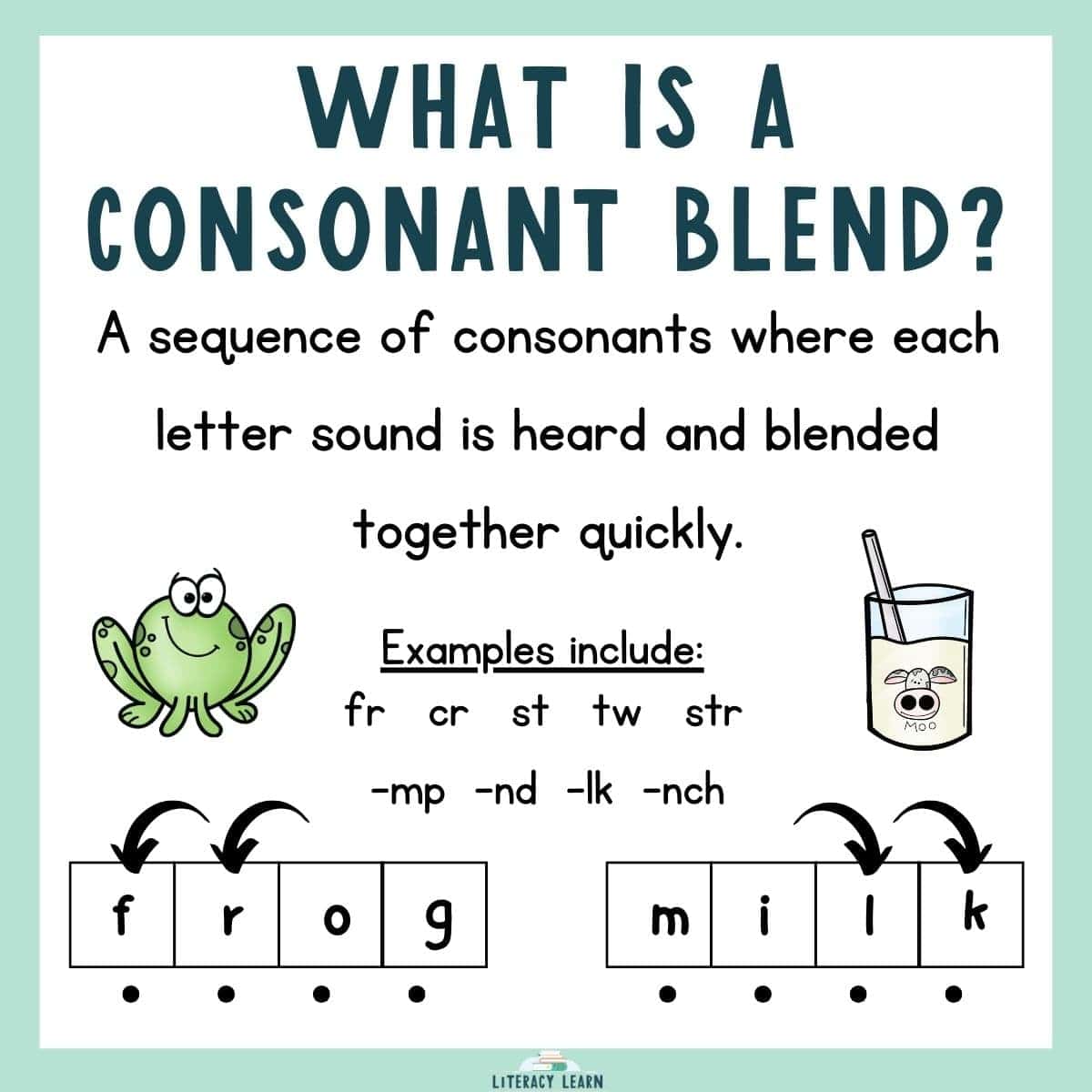
Common Blend Examples:
- broom
- clock
- draw
- flag
- glue
- plug
- skateboard
- spoon
- stop
- truck
- twin
- act
- gift
- scalp
- lamp
- branch
Consonant blends are typically categorized as beginning or ending blends.
For example:
- The blend ‘tw’ is only used at the beginning of a base word.
- The blend ‘-mp’ will only be used at the end of a base word.
- Some blends can appear at the beginning OR end of a word – like ‘st’ (fast, stamp) or ‘sk’ (skunk or task).
- All blends can appear in the middle of a word if a prefix or suffix is added (like in the words untwist or limping).
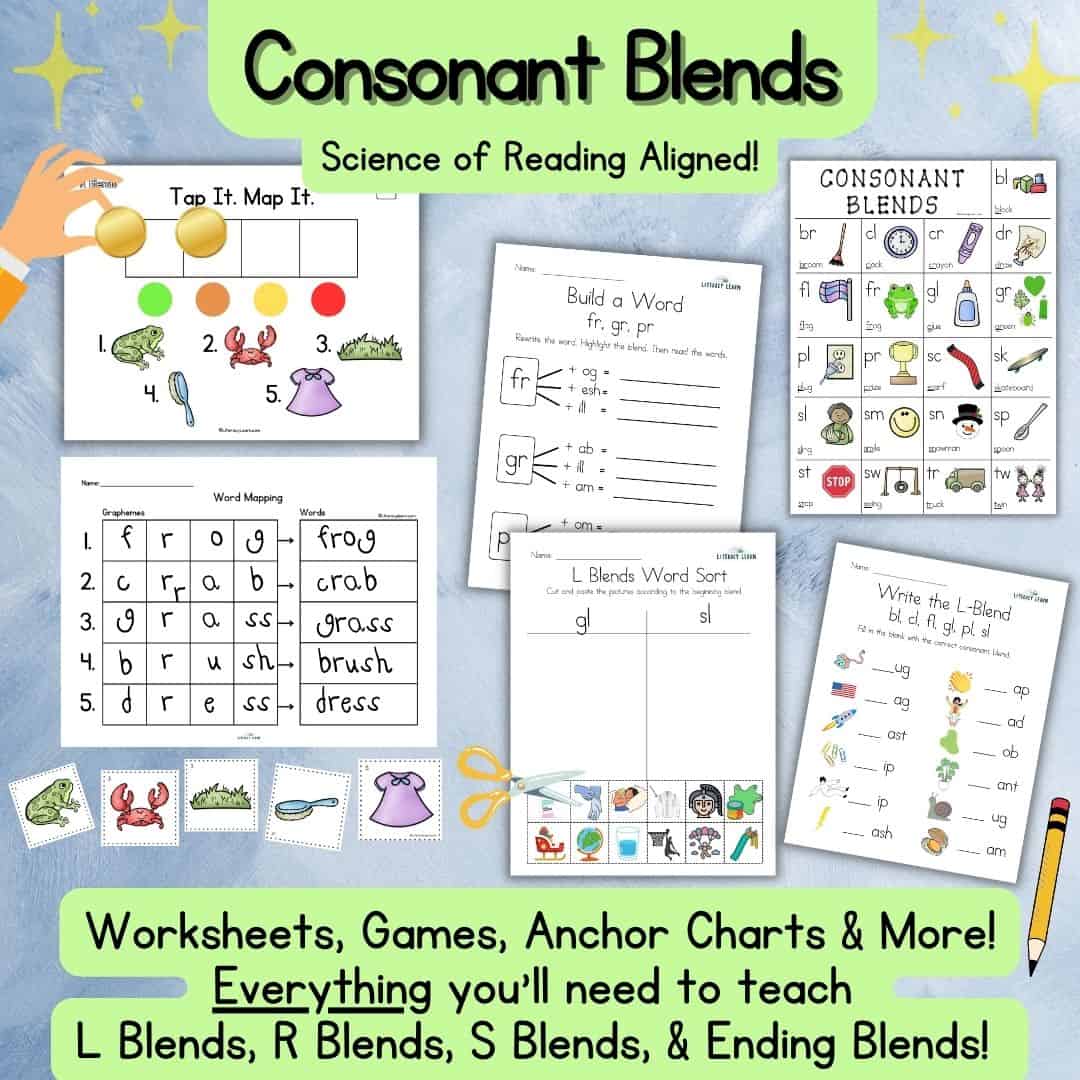
Want the Ultimate Consonant Blend Bundle (pictured above)? Get charts, worksheets, games, word lists, phoneme-grapheme mapping worksheets, look-alike words, word ladders, and more! Everything you need to teach and practice consonant blends in one product.
Digraphs & Blends: What’s the Difference?
You may still be wondering, what is the difference between blends and digraphs? They definitely have some similarities, but there are important differences too!
Both blends and consonants involve multiple consonant letters coming together. However, the key difference lies in how these letters are pronounced.
Consonant blends (like ‘bl’ in “blend”) occur when two or more consonants appear together in a word, and each consonant sound is still heard distinctly.
👉 In ‘bl,’ you hear both the /b/ and /l/ sounds, although they’re said very quickly.
Digraphs (like ‘sh’ in “shoe”) are a pair of consonant letters that come together to create a unique sound, different from the individual letter sounds.
👉 In ‘sh,’ you don’t hear /s/ and /h/ separately; instead, they combine to make the /sh/ phoneme.
To review, the consonants in blends keep their sounds, while the consonants in digraphs combine to create a new sound.
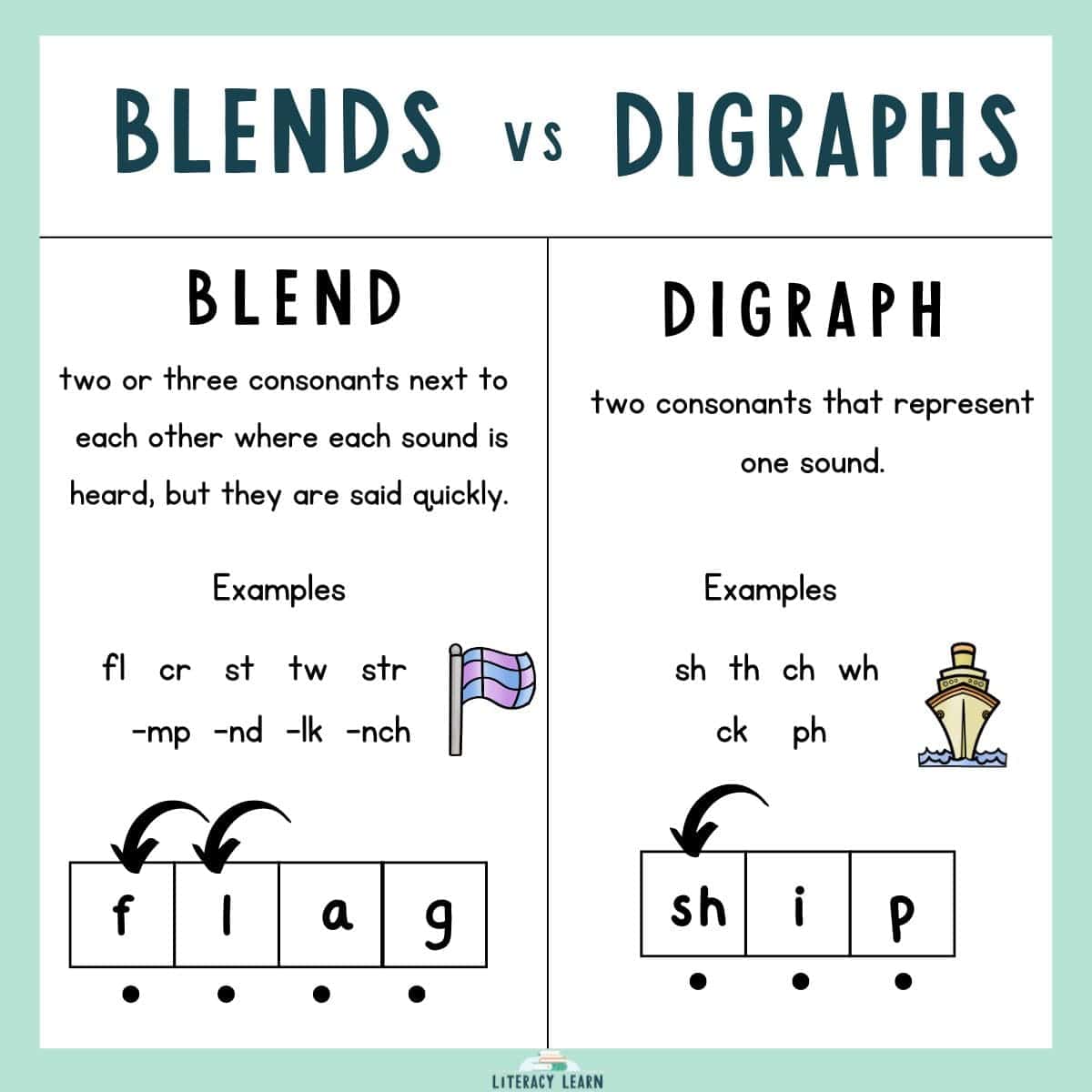
Understanding these academic terms and concepts can greatly help kids when learning to read and spell words correctly.
Teaching Consonant Digraphs
Digraphs are introduced toward the end of kindergarten after kids know most of their letters and sounds.
✨ Explicit Phonics Instruction: Start with a strong foundation by providing explicit phonics instruction. Ensure your students understand that a consonant digraph is two consonants that make a single sound. Introduce common digraphs like sh, th, ch, ck, wh, and ph according to your scope and sequence.
✨ Word Sorts and Games: Engage students in word sorts and games that focus on consonant digraphs. Sorting words into categories based on their digraphs helps students recognize patterns and develop spelling skills.
Games like Bingo, board games, or read and roll games with digraphs as the focus can make learning enjoyable and reinforce their understanding of digraphs in different contexts. Multi-sensory practice reading and spelling words with digraphs is also helpful!
✨ Visual Aids and Manipulatives: Visual aids and manipulatives are powerful tools for teaching consonant digraphs. Use flashcards, posters, and a sound wall that prominently display the graphemes.
Additionally, letter tiles that have digraphs on one tile can be beneficial for hands-on practice. Encourage students to physically manipulate the tiles to form words with digraphs, making the learning experience interactive.
Teaching Consonant Blends
✨ Introduce Blends Systematically: Begin by introducing consonant blends in a systematic and sequential manner. Start with blends with similar features like L-blends (bl, cl, fl…) or R-blends (fr, gr, pr…) Gradually progress to more complex concepts like triple blends with three sounds like “str” and “spl.”
✨ Don’t Explicitly Teach Blends: The great thing about consonant blends is that we don’t have to teach them as separate units of sound. If students have a solid command of individual consonant sounds, then we can teach blends as a continuation of this.
✨ Word Building and Decoding: Encourage word-building activities using blends. Provide students with a list of words containing specific blends and guide them to break down the words into their individual blend sounds.
✨ Spelling words with Blends: For spelling, use finger tapping and Elkonin boxes. These multisensory strategies help kids visually see that each sound within the blend gets its own box, ensuring that students connect speech to print!
Blends are usually introduced in first grade after they have a strong command of letters a-z, short vowels, digraphs and floss.
Best Teaching Tips
🗣️👋🏽🧏🏽 Multi-sensory Techniques: Be sure to incorporate multi-sensory and multimodal techniques into your teaching. Utilize tactile methods like sandpaper letters, magnetic letters, or letter tiles to help students physically manipulate and arrange the sounds.
Using sound boxes helps kids get a great command of spelling words with digraphs and blends while learning the differences between them. Using a hands-on approach enhances their understanding and retention of these concepts.
👂🏻Phonemic Awareness: If kids are struggling with digraphs or blends, you will want to backtrack and provide phonemic awareness activities. This includes the ability to hear, identify, and manipulate individual sounds within words.
Start with simpler phonemic activities, such as isolating initial and final sounds in words. David Kilpatrick’s One Minute Drills is an excellent option and can be found in his book Equipped for Reading Success.
📘 Use Decodable Texts: Because digraphs and blends are early phonics concepts, you want to provide kids with quality decodable texts to help reinforce the concepts they’ve learned in authentic ways. You can get a ton of FREE decodable texts to use!
FREE Blends and Digraph Resources
Having resources at your fingertips can make planning and teaching these phonics concepts so much easier. To help with that, you can visit the posts below, scroll to the bottom of each post, and grab these awesome resources for FREE!
⬇️ The resources in the graphic below can be found by clicking the links below.
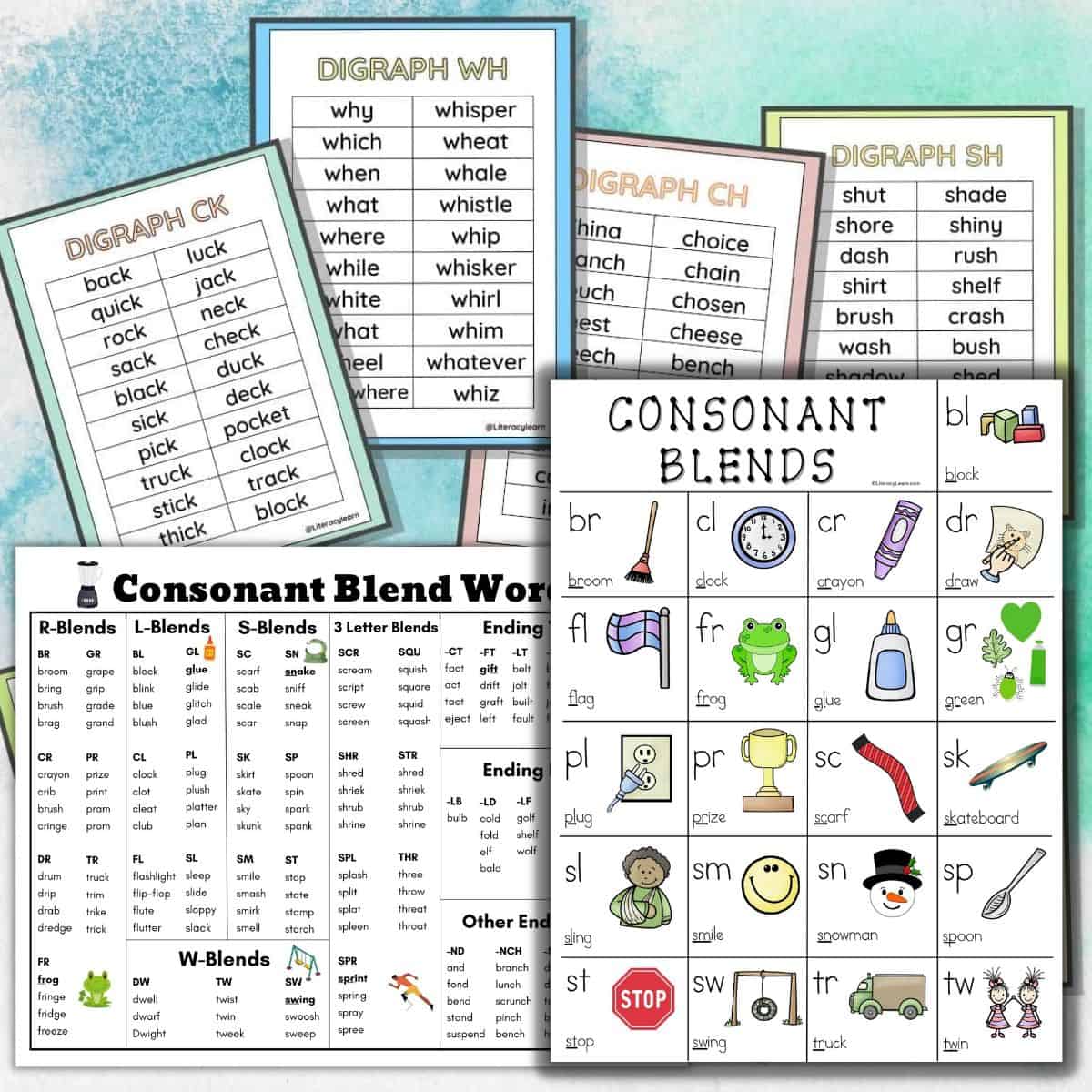
- 83+ Consonant Blend Words in list form
- Colorful Consonant Blends Anchor Chart
- 161+ Digraph Word Lists
- Digraph Decodable Sentences worksheets
- Consonant Blends Decodable Sentences worksheets
More Recommended Resources
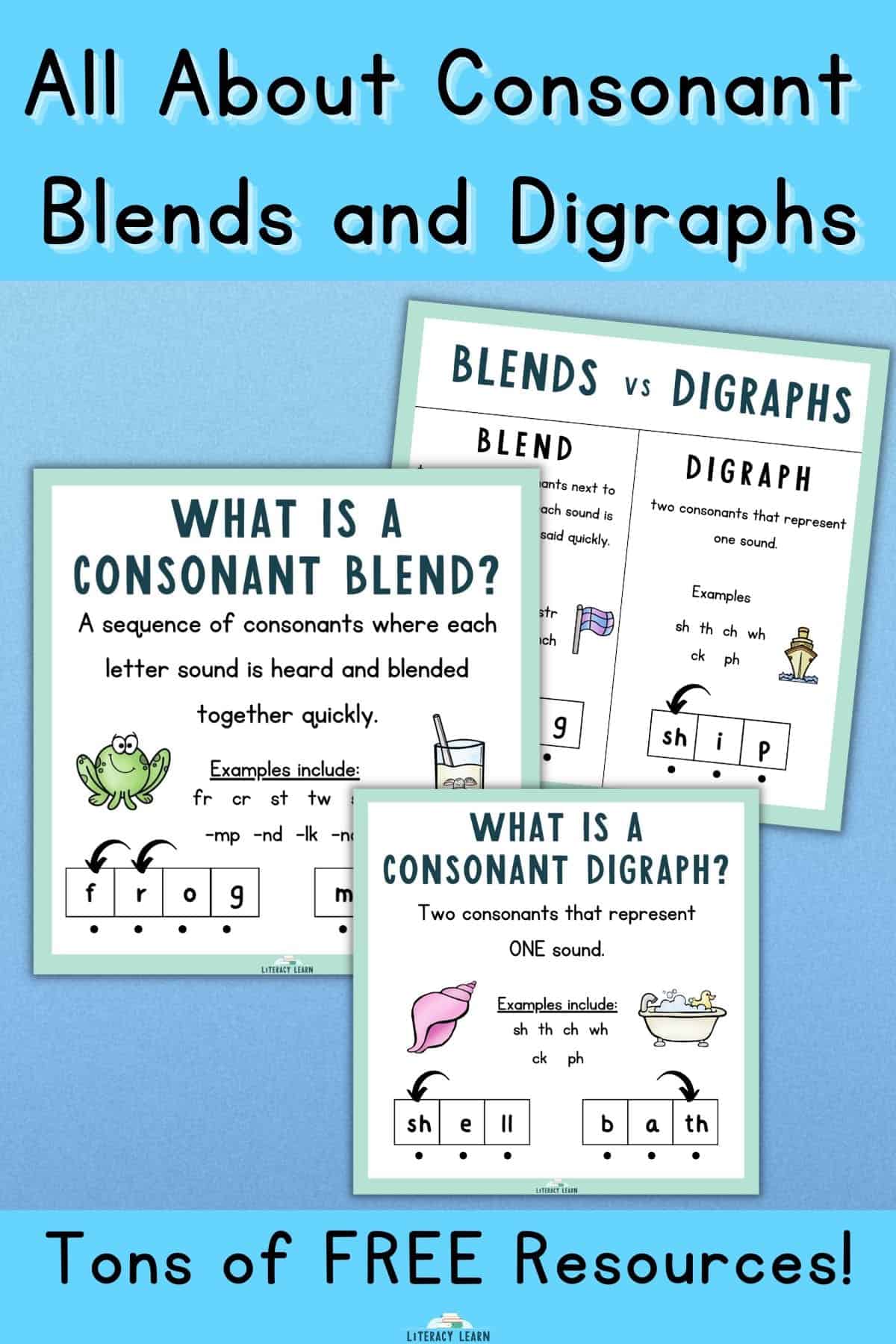
🖨️ Download & Print
We’d love to hear about how you’re using these resources with your students! Please comment below or tag us on Instagram @Literacylearn to tell us your best tips for teaching blends and digraphs.
DOWNLOAD TERMS: All of our resources and printables are designed for personal use only in homes and classrooms. Each teacher must download his or her own copy. Please do not save to a shared drive, reproduce our resources on the web, or make photocopies for anyone besides your own students. To share with others, please use the social share links provided or distribute the link to the blog post so others can download their own copies. Your support in this allows us to keep making free resources for everyone! Please see our Creative Credits page for information about the licensed clipart we use. If you have any questions or concerns regarding our terms, please email us. Thank you!


Love these graphics. They will fit nicely in our notebooks to use as a resource. I really appreciate that after clicking on the download and clicking the back button, I was back to the other downloads on this post. I appreciate not having to scroll through the post again to get to the other downloads. Y’all think of everything!!